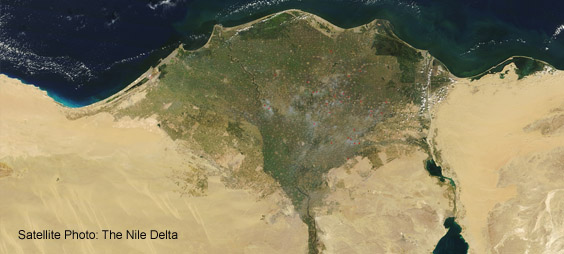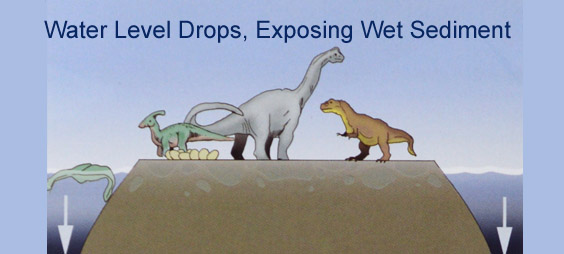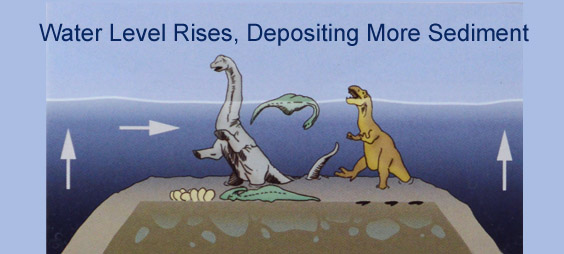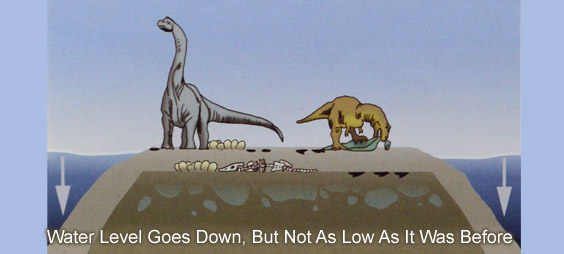
Briefly Exposed Diluvial Sediments (BEDS)
A basic question that must be answered is: Why were billions of dinosaur tracks preserved as fossils, yet today we do not see any process that could result in the preservation of even a few footprints? The present is obviously not the key to the past. Something big happened that resulted in billions of dinosaur footprints around the world being preserved as fossils.
"Tracks made on a wet surface, such as a mudflat, are baked by the sun until they become rock hard. The tracks are now resistant to erosion by the next flood or tide."
However, they also point out another possibility:
"One we favor pertains to the phenomenon of underprints. By their very nature underprints are already buried at the time they are made."
The problem with this explanation is that underprints do not have the detail we see in many dinosaur fossil footprints. As a third option some have proposed that the dinosaur steps in deep mud, and as he pulls his foot out the mud immediately collapses to fill in and cover the track. However, our examinations of dinosaur track sections all show fine laminations that eliminate this as a possible preservation mechanism.
The Nile Delta region (Egypt) is a hot dry area famous for flooding annually, bringing new soil and resulting in conditions that are some of the best in the world for farming. This has been going on for thousands of years. Yet no footprints (or bones) are preserved as a result of these annual floods.
Maybe it takes a lake or inland sea to preserve footprints as fossils. Evolution-based thinking theorizes that the location where our tracks came from (the Connecticut River Valley) had an arid climate with an annual rainy season that produced temporary lakes. Dinosaurs left footprints on the shore of a lake and that resulted in the fossilized footprints we find today.
In the American west the same thing supposedly happened. Dinosaurs walked along the western shore of an inland sea leaving footprints that fossilized.
Today there are lakes in deserts. There are lakes in locations with rainy monsoon seasons and dry seasons. Hudson's Bay is an inland sea. But no fossils are produced on the shores of any of these. HOWEVER, someone might say, the right type of inland seas only form during periods of high sea levels, creating inland seas, that have only existed in the past. That doesn't help. The thinking on sea levels is that sea levels were low during the early Jurassic when many millions of dinosaur tracks where made. Something very different was happening. And it was very big (worldwide).
The bottom line is, all of these explanations fail to describe conditions needed for footprint formation and preservation, as we'll in the next few stops on our tour.


